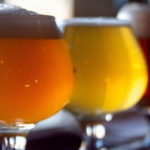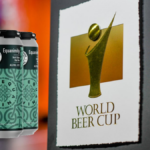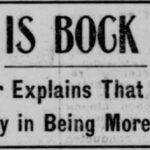Anyone remember the Tap Room at Fitger’s?
Before the Rex Bar existed, Fitger’s had the Tap Room. It was a party room that you rented out for 10 dollars and got unlimited beer and kegs. I’m doing an article on the history of the Rex and if anyone went to the Tap Room when it was called the Tap Room, you should let me know your memories!
Recommended Links:
Leave a Comment
Only registered members can post a comment , Login / Register Here














21 Comments
Paul Lundgren
about 13 years agoDorkus
about 13 years agoBarrett Chase
about 13 years agobully
about 13 years agoJake
about 13 years agoadam
about 13 years agoz_man
about 13 years agoMr. Nied
about 13 years agoadam
about 13 years agoPaul Lundgren
about 13 years agoz_man
about 13 years agoTony D.
about 13 years agoThe Big E
about 13 years agowoodtick
about 13 years agoTomasz
about 13 years agospy1
about 13 years agoYet another "tap room": Storeroom murals tap into the past Wall-to-wall paintings once adorned People's Brewing Co. tap room, which now houses brick samples for West Duluth business By Chuck Frederick Duluth News Tribune, August 11, 1999 The north woods murals have been around for more than six decades, dating to the end of Prohibition and a time when People's Brewing Co. produced the Twin Ports' only malt liquor. But they've been largely forgotten inside the once-pub-like tap room since People's left West Duluth in 1957. Brock White, a building materials supplier and brick distributor, owns the building now and uses the old tap room as a storeroom for brick samples. But that doesn't mean its owners haven't puzzled over the murals they inherited. "I'm concerned that they're aging and that someday they'll be lost," Brock White owner Dave Whitney said recently inside the stuffy, second-story room. "They seem significant enough that they should at least be noted. Maybe they could be photographed and recorded somewhere. "And I'd love to know who the artist was. Did he do any other mural work," Whitney asked. "Just how significant is this?" Good questions. But with few easy answers. Local art experts say the paintings are amateurish and more commercial than academic. Artistically, they simply aren't very significant. "They're just generic north woods scenes," said Martin DeWitt, director of the Tweed Museum of Art at the University of Minnesota-Duluth. "They were done primarily for decoration by someone who was less-than-professional, probably someone who went around doing commission jobs." "The artist was probably hired simply to create an atmosphere. He or she did do that," said John Steffl, the artistic director for the Duluth Art Institute. "But the landscape isn't from around here. It's an imagined scenery. I don't think we're looking at any sort of a masterpiece of American art." But that doesn't mean they aren't valuable, said local history buffs. "We don't have another space like this in the city of Duluth," said Chad Perkins, a local preservationist and staff member of the Heritage Preservation Commission. "This room is part of Duluth's history," Perkins said. "It's important to the history of this business and the role it played in West Duluth. And it's a remnant of Duluth's lost era of brewing. This is one of the last pieces of evidence of that heyday." Duluth was once home to three breweries: People's, Fitger's and Duluth Brewing and Malting. There also was Northern Brewing in Superior. People's was among the smallest with a capacity to produce only about 40,000 to 50,000 barrels a year. That compares to Fitger's, which had a capacity of 150,000 barrels. People's started production in 1907. "They never made much money," said Coopen Johnson, a longtime Fitger's employee and an expert on local brewing history. "They called it the People's Brewery because the idea was that this was for individual saloonkeepers who weren't already tied to the other local breweries or even to brewers in Milwaukee." People's produced the Twin Ports' only stout beer and its only malt liquor, which was popular for its higher alcohol content. The company's products included People's Choice, People's Stag, Olde English 600 malt liquor, Ruff's Olde English Stout and Regal Supreme. During Prohibition, People's filed for bankruptcy, but remained open, bottling soda pop, said Pete Clure, who has been collecting local beer memorabilia and researching local brewing for more than two decades. The brewery closed in 1957. "People's was squeezed out," Clure said. "They just couldn't compete. A brewery that size just couldn't make it. There were a lot of local brews to choose from back then and after (World War II), that's when the national labels really started coming in." The local breweries all had tap rooms. During work hours, employees took their beer breaks there. In the evenings, owners entertained clients and other guests. And on weekends, bachelor parties and other gatherings filled the pub-like spaces. "You could rent Fitger's for $10 a night, I remember," Johnson said. "And that included a bartender and all the beer you could drink." Fitger's tap room was gutted years ago and is now a gift shop. The others are all gone, too -- with the lone exception of People's. Though it's just a storeroom now, the old bar is still there, as are the taps and even a turn-of-the-century piano. "It's the last existing tap room we have," Clure said. "And it's all still there, too, right down to the beer coolers and old bar. It's significant. It's important because it's intact. I hope it's never lost." The murals cover every wall inside the tap room. At one time, they even covered the windows. They depict winter hunting scenes, logging camps and a fishing cabin. An old wooden inboard boat slices across a glass-still lake. A hunting dog hurries to catch up to its master. And a moose searches for food. Scrawled near the bottom of one of the murals is "R. MacG -- Galloway" and "1933." Neither DeWitt nor Steffl recognized the name of the apparent artist or artists. But the year jumped out at them. Nineteen-thirty-three was when Prohibition was lifted, ending 14 years of bootlegging and illegal alcohol trading. America also was struggling through the Great Depression then, and artists, many of them literally starving, wandered the country, looking for work. They helped fuel America's grand era of murals, which lasted from the 1890s through the 1930s. The federal government even hired artists then to beautify Works Progress Administration, or WPA, projects. In the Northland, memorable pieces, many of them still around, were painted during this era. They include murals in the Kom-On-Inn bar in West Duluth, NorShor Theatre in old downtown, the old Salter School on London Road, Hibbing City Hall, the Lake County Courthouse, Ely High School and elsewhere. "A tap room in a brewery is a perfect spot for this sort of art," said Tom O'Sullivan, a curator of art for the Minnesota Historical Society who has traveled the state studying these murals. "Artists would go far and wide back then to find someone who would pay them to decorate the walls. These murals aren't common in the dime-a-dozen sense, but they were popular. They aren't unusual." The murals in the old People's Brewery would be more significant had they been produced by WPA-hired artists. They weren't, O'Sullivan said. WPA-sanctioned murals were always in public places, and the program was so image-conscious, there's almost no way it would have ever associated with a brewery or with the production of alcohol. The owner of the old People's tap room has no immediate plans for the murals or the space. Dick Whitney said he needs the storage room. But that doesn't mean he wouldn't listen to ideas. "If someone is willing to build us a storage shed out back, then...," he said, his eyebrows rising as if willing to accept ideas. "It would be great if this space could be brought back to a usable state," said Perkins of the Heritage Preservation Commission. "It's not too far from that now. And we need to preserve the history of Duluth in all forms -- including murals on the walls of an old brewery."Makoons
about 13 years agoin.dog.neato
about 13 years agopopex074
about 13 years agobfinstad
about 13 years agopopex074
about 13 years ago